| |
One of the first inhabitants of the area was the
Timucua Indians. A Spanish Explorer Hernando De Soto mentioned in his
writings all about the Ocala area in 1539. The largest of their villages
was called Ocali however the exact location in the county is unknown. By
the mid 1700s the Timucuas had been decimated due to contact with
Europeans and diseases.
Florida
became a state in 1845 and Marion county was one of the first names
confirmed at the first assembly meeting. It was a growing so rapidly as
Tobacco, rice, sugar cane, cotton and cattle flourished here. In 1846 the
county seat was platted and named Ocala.
In
November one day after Thanksgiving a fire destroyed downtown Ocala. Four
blocks were destroyed including the courthouse, five hotels, and all
businesses. From what I heard not sure if its true but many people died in
the fierce fire. The wood buildings were replaces by brick structures and
Ocala was called the Brick City. We did visit the quarry two
investigations back the same quarry which supplied the building of Ocala.
The
area of Ocala was considered Central Florida's most progressive area with
turpentine, timber, agricultural products, cattle and the richness of the
limestone-based soil was a major contributor to the vigor of the farming
economy.
Ocala
surrounded by rolling hills had year round pastures something rare cause
most states have a harsh winter. The first thoroughbred farm Rosémere was
established here in 1935. In 1956 an unknown three year old named Needles
won the Kentucky Derby and the Belmont Stakes thus leading to Marion
county becoming a focus for the racing world.
Marion
county has over 1000 farms and 450 thoroughbred farms and 50 different
horse breeds. In 1999 it was recognized as the horse capital of the world.
The Ocala area has many old southern mansions with moss draped oaks its
absolutely gorgeous.
Finally
some last quick facts Ocala at one time was owned by Spain then the
British then the US when Florida was added to the states. At one time the
city was actually known as Fort King where harsh battles were fought so
the entire city is haunted by ghost of the Seminole War. In 1885 the
population was 803. At the turn of the century the city was 4 square miles
with 5000 residents making it the fifth largest town in Florida. Only
Jacksonville, Pensacola, Tampa and Key West were larger. The city is
located near the Ocala National Forest which is the largest wooded area in
the state of Florida.
If
you wish to read a more in depth read further below is one found on the
city site. I figured I would share it since its to much to type all out.
©
By
Rick-LordOfThyNight

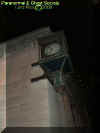
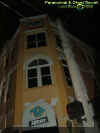
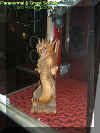
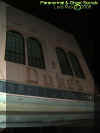
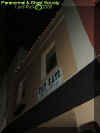
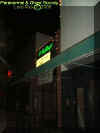
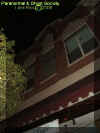
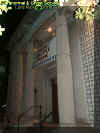




DOWNTOWN
OCALA HISTORIC CONTEXT AND HISTORY
During the period that Florida was under Spanish rule, Spanish Governor
Don Jose Coppinger made generous and extensive land grants to those
individuals in his favor, or to those having performed some service to the
Spanish crown. Eleven grants were made between 1817-1818 for lands within
today's Marion County. These included grants to Alvarez, Sanchez, Perpall
and Hijuelos. A large area of today's city of Ocala is located upon
property purchased from heirs of Antonio Alvarez, who received a land
grant in 1817.
The Legislative Council of the Territory of Florida authorized the
formation of Marion County on March 25, 1844. The county received its name
in honor of Francis Marion, one of the Florida heroes of the Revolutionary
War. Florida Governor William D. Moseley appointed the first board of
county commissioners on October 31, 1845. Members included Thomas Barnes,
Abraham Geiger, John Morrison, and Cotton Rawls. John M. McIntosh was
appointed chairman. E.D. Howse became the first appointed sheriff and John
G. Reardon, the first county treasurer. Reardon also served as the
county's first representative to Florida's legislative Assembly. It was
Reardon who filed for a patent from the United States for 212.38 acres of
land in 1846 for Ocala, to be established as the Marion County seat. The
earliest known minutes of the board date from February 20, 1846. Six days
later, at another meeting, the board selected Ocala as the county seat.
In March, 1846, David Bruton, a former South Carolinian and the Marion
County Engineer, completed the city's first survey and created the first
plat of Ocala. The survey took thirty and a half days and Bruton was paid
$35.50 for the work. The area contained eighty blocks, ten from north to
south, eight from east to west, roughly from the Magnolia Avenue railroad
crossing on the north to Fifth Street on the south. Block 56, one block
slightly south of the center of Bruton's survey was set aside for a
"Public Square" for the construction of a permanent courthouse.
The remaining lots were offered for auction. Streets were laid out with
those bounding the Public Square being ninety-nine feet in width, with
others being sixty-six feet wide to allow for future growth. Later these
were reduced to fifty-nine and forty feet, respectively. All blocks,
except for those on the north and west sides of the plat, measured 198
square feet and were divided into four lots each selling for $5.00 to
$20.00 per block. Lots facing the courthouse square were priced higher
than others but the first lots sold were for $5.00 near the site set aside
for a temporary courthouse, east of South Main Street below King Avenue.
The north half of the square was purchased by Josiah Paine of Maine for
$17.25 In April 1847, Paine paid $50.00 for the south half of the same
block. Paine erected a store building and the first boarding house in the
city, the first "Ocala House." In 1846, John G. Reardon had
acquired the block diagonally across from the northwest corner of the
Public Square on which he built a home, believed to be the first private
residence in Ocala. It was here that John Reardon, Jr., the elder
Reardon's namesake, and said to be Ocala's first white child, was born.
Judge Thomas Douglas, a resident of Jacksonville and Judge of the Eastern
Circuit of Florida, acquired the second block north of the square.
In 1849, William S. Harris purchased two lots on N Magnolia Street,
adjacent to the present site of the historic former Hotel Marion. That
same year, Charles A. Mitchell acquired the block north of the square.
Robert Bullock established a home on property he purchased two blocks east
of the Square, fronting today's E Broadway. A jail was also located on the
square until 1854, at which time a new jail was built on the north side of
Ft. King Avenue, east of Osceola Street.
A temporary courthouse, a small one-story log building almost square
measuring 20 by 28 feet square, surrounded by large trees, was completed
by builder James Caruthers on S Main Street at Fort King on the north in
the summer of 1846. The building had walls of peeled pine logs and there
were entrances on three sides, each having a window to its side. Doors and
shutters were of wood hung with massive handwrought iron hinges. Window
sills of 12 inch heart pine rested on large blocks of hard wood. Records
were brought from the Fort King courthouse and the building was first put
in use at a commission meeting on September 7, 1846. This building also
served as a public hall, provided a location for church services, and
served as the town's theater. A house containing jury rooms was also built
on the same block. In 1848, a jail was constructed on the northwest corner
of the lot reserved for the Public Square.
A post office for the county was officially established on March 18, 1844
at Fort King and one was established in the city on September 12, 1847.
William Roberts was Ocala's first postmaster. At about the same time the
Ocala post office was established, streets were being laid out.
Three general stores were in operation in Ocala by 1848. One, owned and
operated by Josiah Paine on the east side of the Square; William S.
Olmstead's store on the west side; and that of John Bullock, at an unknown
location. These stores offered a wide variety of goods shipped in by river
from Palatka by the Ocklawaha River route and unloaded at Silver Spring,
and brought to town by ox-carts. Ocala's shopkeepers offered tea, coffee
and imported wines, newly invented oil lamps, as well as supplies to
satisfy both city and farm customers. The city became a trading,
religious, and social center for the area but had few residents. Most
early settlers lived in the country. Newcomers purchased large acreage for
agricultural use.
In 1848, efforts to construct a permanent courthouse began but due to a
lack of funding, the project did not seriously begin development until the
summer of 1850. Funding was eventually secured by local contributions and
assistance from the State of Florida. The new Colonial Style Marion County
Courthouse was completed, proudly supervised by the county commission
without the use of architectural services, in December of 1851.
In 1854, a decision was made to construct a new jail to replace the
earlier one built on the northwest corner of the courthouse square.
Previously, Block 18 in the northwest section of Ocala had been reserved
as a jail site but the commissioners chose to build the jail closer to the
center of town. Lot 75, just east of the Coast Line railroad track, with
Fort King Avenue on the south and Broadway to the north, was purchased for
the new jail site.
Ocala maintained its importance as a commercial center with supplies being
shipped in large quantities to settlements in south Florida. Steamboats
from Palatka via the St. Johns River into the Ocklawaha River and then on
to Silver Springs carried both passengers and freight and brought many
visitors to Ocala. This was before the establishment of rail service in
the city in 1876 when a rail line was established between Waldo and Ocala
by the Atlantic, Gulf and West India Transit Company. A depot was built
west of the track on North Magnolia Street. Ocala was the end of the rail
line until Tropical Florida Railroad Company built a line south to
Wildwood in 1877. An additional route came about in 1882 when the Florida
Southern Railroad, which became part of the Plant Railroad System c.1885
and still later part of the Atlantic Coast Line Railroad, was extended to
Ocala from Palatka and Gainesville through Rochelle. Ocala's first
passenger depot was located on the southwest corner of Osceola and Fourth
Streets. Short rail lines were also established. The arrival of the
railroads gave impetus to a much speedier development of the city.
The first official census of Ocala was taken in 1870. Six hundred
residents were counted. As the Civil War greatly influenced Ocala's
prosperity, it is speculated that Ocala formerly had a much larger
population. Three years after the war, Ocala's population had been reduced
to approximately 200 and property values plummeted.
In 1875, the Courthouse Public Square was improved with the planting of
trees, installation of a pump and the replacement of buckets used by
citizens at the public well. Costs were borne by the city's aldermen. In
the summer of 1883, the Ocala Banner reported that there was more
building taking place at that time than any other and the city was
experiencing a period of economic growth. The town had become the largest
commercial and trading place in the interior part of the state. A large
number of new residents had arrived and the city limits were expanded in
1883 in all directions to a distance of one mile from the courthouse. By
1887, the population was 2,700 and by the time the decade came to a close,
the population had swelled to 2,904 and Ocala was one of Florida's larger
towns.
By 1880, the town had scarcely grown to 803, with most of the population
residing in close vicinity to the Court House Square. General Ulysses S.
Grant visited Ocala that year, following his term as President and a world
tour. At the time of Grant's visit in 1880, only a few buildings were
built around the square. These consisted of a few frame buildings
constituting the physical plant of the Ocala Banner, a barber shop,
and several residences. Additional structures including; dwellings, Negro
cabins, bakeries, blacksmith shops, stables, and outhouses were diversely
scattered to the north, west, and south of the courthouse. Four wide
streets set off the courthouse square. Several hundred yards east of the
square, pioneer settler, Samuel Oliver Howse, operated a cotton gin. Live
oaks, white and red oaks, and hickory and sweet gum and Magnolia trees
adorned the streets and fenced yards.
Local telephone service was established by E.W. Agnew & Company in
late 1883. That same year, Adolph Schlosser's barber shop opened at the
corner of Main and Broadway, south of the hotel. Captain Samuel Agnew was
just completing the three-story 65 room brick and concrete Palace Hotel.
The hotel had a mansard roof, crowned by a cupola.
On Thanksgiving day, November 29, 1883, amidst the welcome of three
special trains of the Florida Southern Rail Road by a crowd of 2,000 for
an all day outing at Lake Weira, fire broke out. The fire started in the
two-story frame store of Benjamin & Company at the southeast corner of
Main Street and Ocklawaha Avenue. The fire spread destroying the frame
Snowden's Drug Store to the south. The fire quickly engulfed and consumed
the new Ocala House Hotel, despite bucket brigade efforts to save it.
Flames moved on to destroy Schlosser's barber shop and shortly thereafter,
all the buildings located on the east side of Main Street, between
Broadway and Fort King Avenue. When the wind shifted, the fire turned
westward across Main Street and destroyed another two blocks to Orange
Street. On the south side of the Public Square, the Banner office
was destroyed and the home of its editor and one additional residence were
consumed. The new Palace Hotel burned. The Magnolia Street home of Dr.
Thomas Gary and James H. Whitfield's boarding house at the end of Fort
King Avenue went up in flames. Finally, another dwelling and a mill that
processed the moss from oak trees for various uses were destroyed before
the fire ceased. All of the buildings on the east side of today's SE 1st
Avenue from Silver Springs Boulevard to Ft. King Street were destroyed. In
all, ten stores were wiped out and five (four) blocks of the business
district were left in ashes or only with blackened chimneys. Some of the
estimated $350,000 in losses were insured while others were not. Rescued
articles ignited when placed too close to the fire's path and theft and
looting increased the loss. Numerous records were destroyed, including
newspaper files containing a great deal of Ocala and Marion County's early
history. Many persons were left homeless. It was not for another four
years in 1887 that the city took action to provide some organized fire
protection, The Ocala Hose Company No. 1 and the town acquired its first
fire engine, a steam one in 1888, when the Ocala Fire Department was
established.
The re-building of the town began almost immediately. Frame buildings were
replaced with buildings utilizing brick, granite, and metal. Within five
years, Ocala was identified throughout the state as "The Brick
City". Large brick stores of two and three-stories with were at the
time termed to be of "modern styling" and "ample
capacity" stood in place of those destroyed in the fire. The
development of the Brick-Front Store building type as many of Ocala's
buildings built following the fire could be categorized, was directly
related to the availability and desirability of brick masonry as a
fireproof, relatively maintenance free construction material. Brick was
commonly used in the construction of Masonry Vernacular buildings but was
used more prevalently in the northern part of the country than in Florida.
It was not easily transported to Florida during the state's early
development given the limited availability of railroads.
In the year following the fire of 1883, the three-story Marion Block
(Marion Opera House) was erected on the southwest corner of Main Street
and Broadway by D.C. Wharton Smith of Philadelphia. Other buildings that
rose out of the ashes of the fire included; Ocala's first two bank
buildings, the Montezuma Hotel, Rheinauer's store, the Union Block and
Gary Block, all on the south side of Broadway between SE 2nd Avenue and
Magnolia.
By 1884, the town had several wholesale warehouses and more than 25 retail
establishments. Two mercantiles were also conducting private banking. A
wide variety of people frequented the Ocala House hotel including not only
tourists but settlers and capitalists. Distinguished northern visitors,
authors, railroad engineers, grove owners, planters, real estate brokers,
promoters, and European travelers registered at the desk.
Plans to replace the temporary courthouse on the Public Square began in
the early 1880s. John F. Dunn offered to erect the building on a site not
more than one thousand yards from the Public Square, if the County
Commissioners would give him a deed to the square so that he could donate
the site to the town for a park and parade ground. His offer was rejected
when it was decided that the town would retain the original courthouse
site. The old courthouse was demolished and preparation for the completion
of the new courthouse progressed.
A new courthouse at the center of the Public Square was completed in 1884.
This modest "box-like" building was topped with a cupola. A new,
much larger three-story Ocala House of red brick was also completed in
1884, fronting Main Street from North, later Ocklawah (today's Silver
Springs Boulevard) Avenue to Broadway. (See Figures 2 and 9). It included
a wing along Broadway from Main Street (today's SE First Avenue) to
Osceola (today's E Second Avenue). A square tower with a balustraded deck
topped the roof, providing a view of most of the town. A number of other
two and three-story brick structures were built, including Ocala's first
two banks, one occupying space in the Ocala House and the other at the
southwest corner of South (today's S Broadway) and Magnolia Avenue. The
Montezuma Hotel was at the northeast corner of Main Street (today's Silver
Springs Boulevard) and Fort King Avenue, the Marion Block, the Rheinhauer
& Company store, the Union Block, and the Gary Block, were all on the
south side of Broadway, between Main (today's Silver Springs Boulevard)
and Magnolia Streets. (See Figure 2). As evidence of Ocala's
re-establishment as a prosperous trade center, a number of prominent
Jacksonville merchants, including S.B. Hubbard and Philip Tischler and
others, established branch stores in Ocala and saw great success.
Although Ocala's original city charter was granted in 1866, the charter
was misplaced and it was necessary to obtain new articles of incorporation
by an act of the Legislature. The new charter was dated January 28, 1885.
This second charter established the town limits at one thousand yards in
each direction from the Public Square. Within a few years, the boundaries
were extended one mile each direction from the Square. The town's
population settled into the new areas, but mostly to the east from Osceola
Street. Limerock began to be used for the construction of streets and
roads. A limerock mine was established at the southwest edge of the city.
In the years following the Civil War, Ocala's economy grew considerably as
a result of improved communication and transportation systems, increased
tourism, and citrus and phosphate production. Banking facilities began to
sprout up within downtown Ocala. In 1882, John F. Dunn & Co. organized
Ocala's first financial establishment, the Bank of Ocala, on the southwest
corner of Broadway and Osceola Street. The bank was housed in the
Merchants' Block, one of the city's finest commercial structures, built of
red brick with imported granite trim. In 1887, the institution was
reorganized and changed its name to the Merchants National Bank. The
bank's first officers were Hon. John F. Dunn, President; H.C. Wright, Vice
President; and R.B. McConnell, Cashier. The bank was relocated two years
later to the southeast corner of Main Street (today's Silver Springs
Boulevard) and Broadway within another building erected by John Dunn. (See
Figure 3). The upper floors provided a variety of office suites for local
businessmen including L.J. Haisley, who was one of the leading commercial
real estate men in the city at the time. In 1897, the bank was taken over
by Z.O. Chambliss and T.T. Munroe.
E. Walter Agnew, originally of South Carolina, took over his father's
Ocala store in about 1883 and control of one of the largest mercantiles,
not only in Ocala but in Florida at the time, E.W. Agnew and Company on
the corner of Magnolia Street and Broadway. The mercantile building was
completed in 1883 and enlarged in 1890. The three-story brick building
with a basement displayed granite trimmings and had a frontage of 60 feet
and a depth of 150 feet. The store handled a variety of general
merchandise including dry goods, millinery items, notions, clothing, hats,
caps, boots, shoes, fancy groceries, carpeting, hardware, and home
furnishings. The store also did a limited banking business. Agnew, a
contractor and diversified investor, established the First National Bank
in 1886, with authorized capital of $150,000, in a three-story building he
erected on the southwest corner of the square at the intersection of
Magnolia Street and Broadway (formerly Exposition Street). The bank was
constructed on the former site of his father's Palace Hotel, destroyed in
the downtown fire of 1883. At the time of completion, the bank had the
"largest and finest" depository safe in the State with the safe
having been built expressly for the banking facility.
The Buffum Loan and Trust Company was established in 1888 by Frederick C.
Buffum and Edward, natives of Westerly, Rhode Island. It occupied space in
the Ocala House Block. Original officers included; Frederick C. Buffum,
President; Edward H. Buffum, Vice President; and Claude E. Connor,
Secretary and Treasurer.
By 1885, the city had an ice plant, several mills and gins, and an
establishment for utilizing Spanish moss. All were in successful
operation. A Tourist's and Settler's Guide to Florida 1885-1886 by
H.K. Ingram promoted Ocala to businessmen as "second to none in the
State" as a place to "engage in lucrative business" or as
somewhere for those "seeking a safe investment for his capital."
A Florida atlas, "Historical, Industrial and Biographical
Florida" by Wanton Webb and published in 1885, heralded Ocala as
"most advantageously located in the midst of a beautiful tract of
country and is directly on the line of the Florida Railway and Navigation
Company and the Florida Southern Railway." Webb went on to praise the
city's citizens for rallying and rebuilding lost businesses after
encountering the major fire in the downtown district in 1885. In his
publication, he set forth the city's population in 1876 at 300 but
according to Webb, the population had grown to 2,000 by 1884. A list of a
number of Ocala's most prominent citizens at the time was incorporated
into his work. These residents included J.J. Finley, Dr. T.P. Gary, Frank
Harris, Col. S.M. G. Gary, E.J. Harris, S.F. Marshall and Harter.
The Florida State Gazetteer and Business Directory of 1886-1887
indicated that merchandise, fruits, vegetables and cotton were the
principal shipments from the city. The publication indicated that the city
had a good local retail and jobbing trade, was growing extensively in
business each year, and was rapidly increasing its wealth and importance.
The chief business pursuits were mercantile, manufacturing, and shipping
fruits and early vegetables with tri-weekly stage service between the city
and Crystal River. Although the city was located inland, it was connected
by railway lines with the principal points in all directions, as well as
with all the coastal cities of the state. There was a carriage
manufacturer in the city, a machine shop, and several lumber manufacturing
establishments. The town's good location and substantial business district
and sightly residences were also noted as creating an "impression of
thrift and prosperity."
In a history of Ocala by J.O.D. Clarke, published in 1891, Ocala was said
to be among the most progressive, prosperous, best-planned and picturesque
cities in the South. With the public square at center surrounded by shade
trees, banks, hotels and business blocks of brick, stone and plate glass
aligned the square in all directions. Broad boulevards, some with rows of
trees, led from the square. City streets were broad, well graded and paved
with lime rock. A street car line operated to all parts of the city
and to the exposition grounds. Clarke proudly boasted of a first-class
City Market offering a variety of food stuffs such as meats, fish,
vegetables, and butter. The market, built in 1888, was located on Main
Street within a 50 x 100 foot open to the roof two and one-half story
brick structure resting on a cement floor. In 1912, the market was
purchased by W.H. Marsh. It would remain a fixture in downtown Ocala in
the same location into the 1920s when it was known as the Main Street
Market.
Ocala had a "natural sewage system" allowed by a swift flowing
underground river connected to by two "sinks" or natural sewer
wells. In addition, there were three private sewer wells, one at the jail,
another at the Ocala House, and the third at the Montezuma Hotel.
By the last decade of the 1800s, Ocala had prospered and was the site of
two national banks, one banking loan and trust company, one iron foundry
and machine shop, two carriage manufacturers, two saw and planning mills,
two cigar factories, two lime industries, a ten-ton factory, and six or
seven hotels. Between fifty and sixty mercantile houses were in operation
in the city.
During a one year period between 1892 and 1893, Ocala building activity
included $250,000 for the construction of new buildings. This was
exclusive of $25,000 in remodeling and building additions. Stores,
factories, warehouses and dwellings were under construction in all areas
of the city.
In December, 1894 and February, 1895, major freezes damaged the local
citrus industry which had broader economic repercussions. Because of what
was seen as over investment, what was became known as the "Big
Freeze" contributed to the failure of Ocala's two existing banks, the
First National and eventually the Merchants National. The city faced
bankruptcy and for a period of time after the failure of the banks, city
government operated on a cash only basis.
Ocala firmly established itself as a religious center for the area with
the erection of a number of churches within the city during the last
quarter of the 1800s. Grace Episcopal Church was completed in 1880 at
Orange and Washington Street. St. Philip Neri's was a small Catholic
church built in 1883. Later, in 1921, another Catholic Church was built on
East Ocklawaha Avenue at Tuscawilla Street. It was located on the west
side of Magnolia Street, just south of Monroe. In 1884, construction began
on the First Baptist Church on the northwest corner of Magnolia and
Washington Streets, the present site of the Marion Hotel. The Baptist
church was erected to replace an earlier frame church building on the
northwest corner of Lime and Washington, completed in 1851. The church's
second building was dedicated in 1885 and would serve the congregation
until c.1927 when a third church was built on block east of Third Street
and Alvarez. The First Presbyterian Church was dedicated in 1887. Said to
be the "handsomest" church in the community was the First
Methodist Church on the southeast corner of Main Street and Fort King
Avenue. Dedicated in 1891, it also replaced Ocala's first church building,
built with slave labor in 1850, and used by the Methodists for over forty
years. The new church was constructed of brick in a modified Gothic style.
This building served its congregation until a new masonry church in a
Neo-Colonial style was completed in 1927. In 1885, the Church of the
Disciples of Christ, later the First Christian Church, was organized. The
congregation erected a building on the south side of Broadway near Osceola
Street. A small Jewish synagogue was constructed on the north side of
Adams Street and Anthony Road. Other church group organization followed in
later years. The First Church of Christian Science, was formed in 1915 and
their church building on Third Street at Watula was dedicated in 1925.
The city also gained prominence in the area of education. By 1880, Marion
County had more public schools than any other county in Florida. A number
of private schools were also established. The first public high school
opened in 1890 on the west side of Pond Street, between Fifth and Sixth
Streets. A school for blacks had already been established on Orange
Avenue. After fire destroyed that building, a new school building for
black students was built at Academy and Adams Streets. Later other schools
were erected. A red brick elementary school opened on Third Street at
Tuscawilla, a grammar school on Eighth Street.
In January of 1889, the Florida
International and Semi-Tropical Exposition opened in Ocala.
The exhibition was housed in an
expansive frame building on West Broadway, which was temporarily named
Exposition Street in honor of the occasion. A tower was located above the
central entrance of the elaborately designed exposition structure. Both
agricultural and horticultural products from Ocala and throughout Florida
were showcased in the hall. Special excursions by rail from various parts
of the state were run to bring visitors. The event received wide press
coverage in the Florida press, as well as the New York World
publication and other northern newspapers. The exposition lasted for two
winters. Later, the former exposition building was put into use as a cigar
factory. Cigar manufacturing became a major flourishing industry in the
Ocala area beginning in the 1870s. Herbert L. Anderson, an attorney, and
E.W. Agnew, a prominent banker, were both strong Ocala promoters. They
envisioned cigar making as a way to make money and heavily promoted the
business in the city. A factory for the manufacture of red cedar cigar
boxes at the southwest corner of Osceola and NE Third Street, outside the
survey area, was also established. Several factors, including the Big
Freezes of 1894 amd 1895 and subsequent local bank failures, contributed
to the demise of the cigar making industry in the city. What could be
identified as the last cigar "factory" operated in the city by
Charles Peyser in the back of a store remained in existence until the
early 1920s. By this time, Tampa had clearly become Florida's cigar
capital, previously taken over by Key West for a period of time.
An Ocala Board of Trade was organized on July 22, 1887. John F. Dunn
served as the first president and Charles Rheinauer, instrumental in the
group's founding, was an original director. Rheinauer and his brother,
Morritz, had opened a dry goods and clothing business on the west side of
the Court House Square near Ocklawaha Avenue. They were later joined by
another brother, Benjamin. Charles erected a building to house the store
in 1888 on the south side of the Square. The business continued to operate
as Rheinauers, Ltd. at that location for over fifty years. From the Board
of Trade's inception, the organization sought out new industry into the
early 1900s. Records dating from 1915 indicate that the group was building
three boats to use on the Ocklawaha River to establish a base for fixing
freight rates to Ocala when charges were made that the railroads were
retarding growth of the area by charging excessive freight rates.
Coinciding with about the same time, the Board of Trade is credited with
recommending the leasing of the city market to Cherry Cola for six years.
The Board also oversaw the review of floor plans for the new union
passenger station. In 1919, the Ocala Board of Trade was reorganized as
the Marion County Chamber of Commerce. Within a year, Louis Chazal was
elected the secretary of the Chamber until he resigned in 1924 and Horace
Smith replaced him. Smith subsequently served the Board in that capacity
for over twenty years.
Between 1889 when phosphate was discovered in Marion County and 1891,
Ocala tripled its population and the city's business aggregate increased
600%. This was in large part as a result of capitalists arriving from all
over the world and making liberal investment in phosphate and forming new
business enterprises. Within a year of the discovery of phosphate, Ocala
made the transition from a market town to a financial and business center
and supply base for major industrial interests.
In 1888, A.E. Waterman completed an electric plant at the northeast corner
of Osceola and May Streets to supply electricity to the city. Steam to
power the generator came from the adjoining Taylor Mill. Electrical
service began on July 23 following completion of the plant. Gas, heat and
power services were provided by the summer of 1888 by the Citizens Gas
Light, Heat and Power Company.
The Ocala Water Works was finished and put in service by the Jeter and
Boardman Gas and Water Association of Macon, Georgia in 1888. C.H.
Campbell was the first superintendent of the Ocala facility. A brick
pumping station and several auxiliary structures comprised the plant.
Water was obtained from two six-inch drilled wells of 230 feet in depth.
Each well had a pump for supplying the reservoir. In addition, there was a
"reserve tower." The facility also supplied eighty-five double
fire hydrants and two drinking fountains.
Black Ocala residents played an active role in the politics of Ocala in
the 1880s and the 1890s. Ocala had a black Treasurer, Tax Collector, and
member of the Board of Aldermen. Black Ocala community leaders dominated
the State convention of the Republic Party, held in Ocala in 1888. Black
residents also became successful merchants in the city, owning and
operating a number of businesses in the central business district. Their
ventures included stores, a bakery and a restaurant. Blacks also fulfilled
a much needed role as master carpenters, brick layers, and painters in the
city. A number of Ocala residences and commercial buildings were built by
black contractors.
By 1890, large deposits of
phosphate had been discovered in Marion County. Newspapers and magazines
reported the findings. Large tracts of area property were sold and
millions of dollars were invested in the establishment of mining plants. A
number of plants were designed and constructed by George MacKay, a Scotch
engineer recognized as a prominent early Ocala architect. Land sales and
building activity increased in Ocala. New subdivisions were laid out. The
Ocala Street and Suburban Railway laid tracks on Main and Magnolia Street
for mule drawn cars. These tracks were removed before the end of the
decade. Four railroads entered the city by this time; The Florida Central
and Peninsular Railroad, the Silver Springs, Ocala and Gulf, and Florida
Southern Railways.
The town had grown to provide a larger variety of services by the last
decade of the century. Large steam and Chinese laundries, cigar factories,
foundry and machine works, wagon and carriage factories, and saw and
planing mills served the community's needs. Between sixty and seventy
mercantiles offered clothing and groceries with varied stocks.
In 1893, a formal street plan was adopted. Numbered streets were to run
east and west named streets North and South, excepting in the West End and
Marti City (at that time beyond the city limits), where the order was
reversed. Numbered streets were designated with reference to the Public
Square as North, N. First, N. Second, etc.; South, S. First S, Second,
etc. Streets east and west of Magnolia were distinguished with N. First, E
(east), N First, W (west), S First, E, S First, W., etc. Numbered streets
were designated with reference to North Street and Ocklawaha Avenue as N.
Magnolia, S. Magnolia, etc. Some streets received dual street
designations. These street included; Ocklawaha Avenue, May Street,
Broadway, Ft. King Avenue, Caldwell Avenue, Buckelew Avenue, Scribner
Avenue. The sections of Ocklawaha Avenue, Main, South and Magnolia Streets
that bordered the Public Square were also designated respectively as North
Square, East Square, South Square and West Square. At the same time,
Ocala's streets were also numbered. Streets were numbered east and west
from Magnolia Street and north and south from North Street and Ocklawaha
Avenue. Odd numbers were designated to buildings on the right and even
numbers to those on the left. Each number was to represent an imaginary
lot of 25 feet street frontage. Buildings took on the numbers of lots upon
which they were sited.
According to The Brick City Directory and Guide to Marion County,
published in 1893, downtown had 28 business blocks and 6 social or
fellowship halls standing at that time, virtually all sited on Main or
Magnolia Streets and/or facing the Public Square. Social, recreational
organizations, lodges, and fraternal groups were well established. These
included a local diving club, swimming club, womens' clubs, rifle club,
tennis club, and a local orchestra and coronet band. The town had a
substantial legal community with 19 attorneys. Six barbers catered to the
public. Six boarding houses were in operation. A half dozen druggists were
in business. Two dentists and eight physicians met the needs of residents.
Four builders were noted. Seven dry good stores were operating under
prosperous conditions. Nineteen grocers provided necessary foodstuffs to
residents while six other merchants sold general merchandise. Nine hotels
were in operation. Other businesses included; a gun store and locksmith,
hat and shoe stores, hardware stores, clothiers, meat markets, milliners,
watchmakers and jewelers, tailors, liquor stores, saloons, real estate
offices, law offices, physician and dental services, plumbers, and
tinsmiths. All of these businesses were in operation in the original
commercial center of the city.
Telephone service arrived from Silver Springs Park in 1894. James B.
Carlisle and others were able to obtain a franchise for Ocala in July of
that year. The Ocala Telephone Company's office and switchboard were
located on the upper floor of the Gary Block on South Street (SE
Broadway). The telephone company was sold to the Florida Telephone
Corporation in January, 1926.
Ocala's population had grown from 300 residents in 1876 to 2,904 (3,400)
residents in 1890 to 4,597 by the 1895 census. This growth made Ocala the
fifth largest town in Florida and a principal commercial center.
In 1896, following a request by local ministers, the town's alderman ruled
that all cigar stands and soda fountains were to be closed on Sundays and
the sale of newspapers was also to be prohibited. The same year, Ocala was
introduced to motion pictures with one night "stands," single
night presentations.
Both Ocala and Marion County continued to grow in the last part of the
1800s and the early part of the following century. A number of new
commercial buildings were also erected in the business district. Numerous
advertisements for Ocala businesses appeared in local newspapers during
this time offering a variety of goods and services to the community. Such
advertisements included promotions for the Ocala Lumber Co., the Railroad
Restaurant, Nash's Dry Goods, The Olive Wheel (bike shop), The Davis City
Market, and the Anti-Monopoly Drug Store, all located facing the Public
Square. Regardless of the growth in new business, at the dawn of the new
century, Ocala began to suffer an economic depression as a result of the
failure of the phosphate boom in western Marion County and continued
repercussions from the citrus freezes during the winters of 1894 and 1895.
Following a few years of recession, recovery came about. In 1907, a new
county courthouse (non-extant) of veneered Indiana limestone was completed
in the Public Square. Within two years, the United States government began
construction of a post office and a court and office building on the
second block to the north, formerly identified as Dunn Park. By the end of
the first decade of the century, several miles of cement sidewalks had
been laid on the main business streets and additional walks were being
laid.
A need arose for additional
banking facilities. The Citizens Bank and the Ocala National Bank were
established. An attractive Neo-Classical building of Indiana
limestone was built on the northeast corner of Ocklawaha Avenue and
Magnolia Street in 1911 for the Ocala National Bank. The Citizens Bank
occupied space in the former First National Bank on the southwest corner
of Magnolia Street and Broadway. By c.1909, this bank again changed names
and became the Commercial Bank with J.H. Terrell as President. It remained
in the building until the mid 1930s. The Central National Bank operating
in a one-story brick building on the north side of the Public Square
operated for only seven years. The Metropolitan Savings Bank, another
banking establishment, was alleged to be the only bank in Florida owned
and controlled by blacks at the time, opened in 1913 on the first floor of
a three-story building on the southeast corner of Magnolia and Second
Streets. The building also housed the Eagle Furniture Company for many
years. The bank continued in operation until 1928 and the building was
demolished in 1995.
The
first motion picture theater in Ocala, the Edison Electric Theater, opened
in December, 1907 in the Armory on Fort King Avenue, east of Osceola
Street. The Temple Theater (demolished c.1962) was erected on Fort King in
1910 by the Masons. It was the first theater in the city planned as a
theater. The interior plan included an orchestra floor, balcony, and boxes
on either side of the stage. Famous orator and presidential candidate,
William Jennings Bryant, gave a public speech at the Temple Theater when
he visited the city in 1912. Henry W. Savage, prominent theatrical
producer of the time, brought a number of successful stage productions to
the Temple in the years following World War I. Productions included
Ziegfield's Follies, Irving Berlin's "Music Box Revue", and
George White's "Scandals". Each performance featured famous
stars. Plays were also booked during the winter seasons. The Marion Opera
House, which opened c.1884 when the Marion Block was completed closed its
doors by 1908 or 1909 when the building was purchased by Edward Holder, a
phosphate mine owner. After such time, the building was identified as the
Holder Block for several years. Holder converted the former opera house
space and the floor below into offices. He also installed the first
electric elevator in Ocala in the building.
By 1914, black residents of Ocala and the surrounding areas were alleged
to be the most prosperous blacks in the South. They owned almost all of
the businesses on West Broadway, from Magnolia Avenue to 16th Avenue and
beyond. They also owned nearly all of the businesses on Magnolia Avenue
from Broadway south to 10th Street and on S Main Street and had other
businesses in the downtown area. A cotton gin east of the black owned
Metropolitan Savings Bank at Magnolia and Second Streets was owned and
operated by George Giles, the principal cotton gin operator in Ocala from
1912 to 1919. West of the Metropolitan Savings Bank was one of the finest
Negro hotels in Florida.
Ocala's population was approximately 3,385 in 1900, 4,300 in 1911, and
5,370 by 1915, according to state census records. In 1916, a public
library was opened on the south side of Ocklawaha Avenue near Osceola
Street. The library was built with funds from the Carnegie Foundation.
Louise Gamsby became the Ocala Library's first librarian.
Ocala failed to become swept up in the great real estate boom during the
1920s as other Florida cities but by 1925, the city's population had grown
to at 6,500. Great plans were made during this time for the construction
of a $500,000 hotel to be financed by the community. Most of the stock was
purchased locally and the Hotel Marion was completed and opened in
February, 1927. Rents in the city during the early and mid-1920s
accelerated to record levels. With many plans unrealized, the real estate
boom was nearly over by 1926 but nevertheless, the city had gained a
number of improvements and a renewed sense of civic spirit.
Following the stock market crash of 1929, the city experienced financial
troubles. Independent merchants struggled to stay in business faced with
competition from chain stores. Unemployment was staggering. The banks of
the city and county were closed by order of the president but were
reopened shortly thereafter. Units of the Federal Emergency Relief, Civil
Works Progress, and Public Works Administrations were organized locally to
aid in the unemployment issue. These groups built, paved, and widened
sewer lines- along with a number of other projects. Ocala was provided
some relief from the national depression by its proximity to Silver
Springs, one of Florida's most exceptional natural tourist attractions,
both in years past and today. Automobiles brought these visitors which
increased hotel business and the number of guest homes and motor lodges
established and built. The Marion County Chamber of Commerce continued to
promote Marion County and fortunately the area's diversified economy
helped local businessmen fare much better than counties farther south in
Florida who were reeling from the shock of the failure of the Florida Land
Boom of the 1920s.
After experiencing a somewhat slow recovery from the economic hardships of
the Depression, more buildings were being built in Ocala's business
district by 1940 than at any time in nearly half a century. Older
buildings were updated, brick walls were stuccoed, and what, at the time,
was considered meaningless ornamentation was replaced with streamline
designs. A few older buildings, including the landmark H.B. Masters
building on the southwest corner of Magnolia and Broadway, were torn down
to provide space for new structures. Such changes began to alter Ocala's
previous dominating brick appearance.
In January of 1941, construction began on a new theater for the city, the
Marion Theater. The permit was issued in the name of Florida State
Theaters, owners and operators of two of Ocala's earlier theaters, the
Ritz on Ocklawaha (today's Silver Springs Boulevard) which presented live
theatrical productions, and the Dixie on the west side of the courthouse
square.
Beginning
in 1959 and During the 1960s, a large number of historic buildings in
Ocala were demolished to make way for modern structures. Buildings
demolished during this period included the offices of the Marion County
Health Department, originally the home of the Florida Baptist Witness,
then the Ocala Star-Banner. The county's first hospital was razed
to make way for a parking lot. The Temple Theater was also demolished. In
order to accommodate the construction of a new courthouse in the late
1950s, Ocala's red brick jail building was demolished and Pond Street (now
Third) running north to south behind the old jail was closed. A four block
area was also cleared between Ocklawaha Avenue (now Silver Springs
Boulevard) and Adams, to make way for the new courthouse.
|
|
















